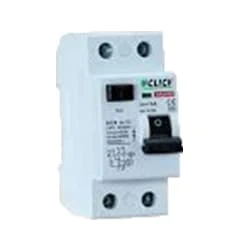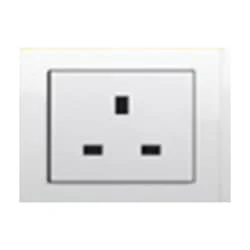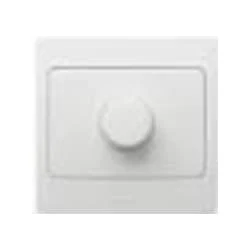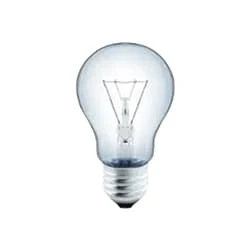Single Phase Full House IPS Wiring | full house wiring
Single Phase Full House IPS Wiring:
This Diagram Shows Single-Phase Power is a 2-Wire Alternating Current (ac) Power Circuit. Typically, There is 1 Power Wire The Phase Wire, And 1 Neutral Wire, With Current Flowing Between the Power Wire And The Neutral Wire. it Stores Energy in a Battery When Electricity is Present in The Main Supply and During Load Shading Hours, The Energy Stored in Those Batteries is Supplied.
Diagram of Single Phase Full House IPS wiring:
 |
| Fig 1: Single Phase Full House IPS Wiring |
Components Need for this Project:
You can get the components from any of the sites below:
- Single Phase Energy Meter [See Buy Click Amazon]
- DP MCB [See Buy Click Amazon]
- RCCB Circuit Breaker [See Buy Click Amazon]
- SP MCB [See Buy Click Amazon]
- 12V Battery [See Buy Click Amazon]
- IPS [See Buy Click Amazon]
- Power Socket [See Buy Click Amazon]
- Switch [See Buy Click Amazon]
- Regulator [See Buy Click Amazon]
- Ceiling Fan [See Buy Click Amazon]
- Bulb [See Buy Click Amazon]
*Please note: These are affiliate links. I may make a commission if you buy the components through these links. I would appreciate your support in this way!
$ads={1}Read Also:
Components used to make the Single Phase Full House IPS Wiring:
01. Single Phase Energy Meter
 |
| Fig 2: Single Phase Energy Meter |
The measuring device with the help of which the electric power or energy of a circuit is measured is called Energy Meter (Energy Meter). Also called a watt-hour or kilowatt-hour meter. For home appliances, we used a single-phase energy meter. The single-phase energy meter is directly connected between the line and the load. Both coils produce their magnetic fields, when the meter is connected to the supply line, and the load. Energy meters are used in homes and in industrial applications where we want to found that how much energy is being consumed by home appliances and electrical equipment.
02. DP MCB
 |
| Fig 3: DP MCB |
Double pole MCB can control two wires. This circuit breaker is generally used in single-phase electric lines. Double pole MCB circuit breaker input has two wires supply two wires and an output. In a single-phase line, A double-pole MCB circuit breaker is used to give good production. This circuit breaker is provided through phase and neutral circuit breaker, it is very safe. This circuit breaker is preferred for home appliances. A DP MCB usually trips for 2 reasons 1. Overload 2. Short circuit.
03. RCCB
 |
| Fig 4: RCCB |
The RCCB (Residual Current Circuit Breaker) or RCCB is an electrical protective device.Residual Current Circuit Breaker is specially designed to protect the electrical circuit against earth fault and human from electrical shock.In this, under normal condition the load is always connected in between the phase terminal to neutral terminal, hence the flow of phase current is equal to neutral current.Earth fault or fault in a power system can cause excess heating, more power consumption, burning or fire, etc. So, protection against earth leakage is very important.
04. SP MCB
 |
| Fig 5: SP MCB |
MCB SP means single pole it protects only one phase switching. MCB (Miniature Circuit Breaker) Curswitch is the most basic general-purpose switch that you use to control a light or another device from one location. These Switches Have Two Brass-Colored Screw Terminals Connected to the hot Power Source Wires. (MCB) For any Distribution Board, the Protection System Must be Used in The Incomer. Phase and Neutral Single Phase Supply to break. 120-volt circuits, 15-20 amp single pole breaker is typically used.
05. 12V Battery
 |
| Fig 6: 12V Battery |
A 12-volt Battery is an Irregular Battery used in Specific Electronic Applications. Of all the types of Batteries, the 12-Volt Battery is one That Looks Very Different Depending on its use. It can be Large or small, Heavy or Light. Twelve-volt batteries are commonly used in RV, Boat, and Other Automobiles Systems. From a Technical Perspective, a Battery Uses one or more cells to Allow a Chemical Reaction Creating the flow of Electrons in a Circuit.
06. IPS
 |
| Fig 7: IPS |
An inverter is an electrical device that converts DC current into alternating current (AC). AC can be operated at any voltage and frequency system with suitable transformers, switches, and control circuits. Most electrical appliances run on AC (Alternative Current). Nowadays inverter is a very common device that is used to change the voltage in any type of machine or to control the speed of the induction motor. For example, the power supply in our country is 50 Hz, and the speed of the motor will also be fixed at this fixed Hz. In such cases inverter is used to drive the motor slowly or strongly.
07. Power Socket
 |
| Fig 8: Power Socket |
A socket is a type of equipment used in electrical wiring lines that always has an electrical connection. According to the need, it can be supplied to the electrical equipment. In case of electric iron, electric hand drill machine and electric hand grinder etc. two-pin socket with earth terminal is used. Also, three-pin sockets are used for electrical appliances that have a metal body and are likely to be electrified. Eg – Refrigerator, room heater, table heater, hot-plate, electric oven etc.
08. Switch
 |
| Fig 9: Switch |
A Single-Pole, Single-Throw (SPST) Switch. It's Got one Output and One Input. The Switch will Either be Closed or Completely Disconnected. SPSTs are Perfect for on-off Switching. They're also a Very Common Form of Momentary Switches. SPST Switches are Commonly Used in a Variety of Electrical Circuits and Applications, Such as Turning on And off Lights, Fans, and Other Appliances. They can Also be Used to Control the Flow of Electricity to Different Parts of a Circuit or to Switch Between Different Circuits Altogether.
09. Regulator
 |
| Fig 10: Regulator |
Reduces fan speed by switching on and off. Reducing the speed of the fan, the power Consumption is also Reduced. It is basically a wire wood resistor-based regulator. The large regulators that were used in the past took up more than half of the switchboard space and were very hot. It looks very small in size. Almost equal to a switch. Electrical regulators are basically made by winding copper wire on an iron core. As Electricity Travels Long Distances Through These Wires, Some of The Electrical Energy is Converted Into Heat Energy.
10. Ceiling Fan
 |
| Fig 11: Ceiling Fan |
The main driving force behind all ceiling fan systems is the motor used inside the fan. We can also compare it with the soul of a fan. This motor converts the supplied electrical energy into mechanical energy which turns the ceiling fan and gives us air. When current is supplied, the magnetic field formed on the positive half-cycle becomes the reverse magnetic field on the next negative half-cycle. The magnitude part does not rotate and the capacitor is converted to a phase when it is connected to a phase motor or ceiling fan with a helical coil or stationing coil. When power is supplied there is a magnetic difference between the phase currents and the coils (acting as two phases) so that the motor or fan rotates.
11. Bulb
 |
| Fig 12: Bulb |
CFLs work in a completely different way from ordinary lamps, they work by using a different process called fluorescence rather than generating light from heat. A typical light bulb wastes 90% of energy and converts only 10% of energy into light, this is where CFL has the biggest advantage. CFL- Curved or conical glass tube filled with argon and a small amount of mercury vapor. The inner wall of the glass is coated with fluorescent material. CFL- It is manufactured using the principle of creating fluorescent light. CFL- Originally white in color but now the construction and use of CFLs producing colored light has become popular.
Thank You for visiting the website. Keep visiting for more Updates
$ads={2}
Frequently Asked Questions
What is the full description of house wiring?
ELCB, DP MCB / Isolator are used as the main control. A number of SP-MCBs are installed in MCB Box to provide phase to individual switchboards of rooms etc. in a house. The neutral wire from the MCB Box neutral link is connected to each switchboard socket and other loads.
What type of wiring is in a house?
Romex is the modern standard for household wiring. Its technical name is Non-metallic or NM cable. The newest kind is NM-B. NM-B is the power supply new standard, so if you have new wiring installed, this is the Project system kind you would get.
Can a single phase have 3 wires?
This 3-wire single-phase project system is common in North America for Circuit diagram residential and light commercial applications. Circuit breaker panels typically have two live (hot) wires, and a neutral, connected at one point to the grounded center tap of a local transformer.
What is the summary of house wiring?
House electrical wiring is a process of connecting different accessories for the distribution of electrical energy from the supplier to various appliances and equipment at home like televisions, lamps, air conditioners, etc. Let us look at the power supply of different types of electrical wiring that are used in domestic and properties.
Why is house wiring important?
Wiring devices provide power supply proper control and connections in your electrical devices and wiring. Wiring devices are needed for efficient, as reliable, and safe electrical Circuit diagrams and wire connections in your home or business. They can protect circuits and prevent fire and shock hazards.













Post a Comment
Do leave your comments